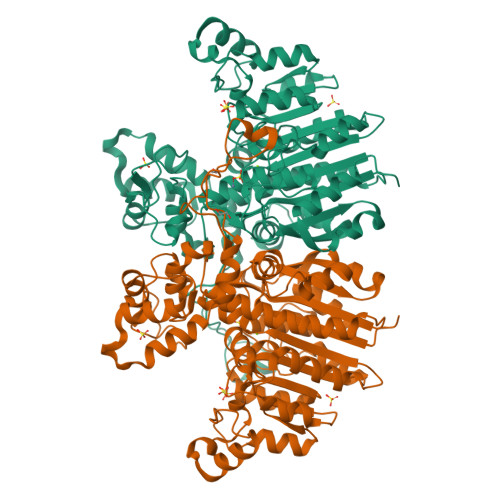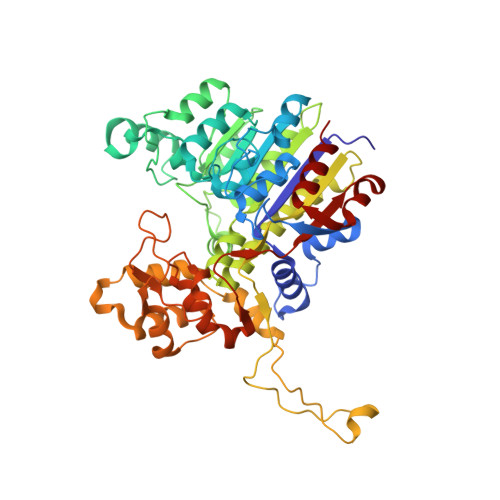The 1.4 A crystal structure of the large and cold-active Vibrio sp. alkaline phosphatase.
Helland, R., Larsen, R.L., Asgeirsson, B.(2009) Biochim Biophys Acta 1794: 297-308
- PubMed: 18977465
- DOI: https://doi.org/10.1016/j.bbapap.2008.09.020
- Primary Citation of Related Structures:
3E2D - PubMed Abstract:
Alkaline phosphatase (AP) from the cold-adapted Vibrio strain G15-21 is among the AP variants with the highest known k(cat) value. Here the structure of the enzyme at 1.4 A resolution is reported and compared to APs from E. coli, human placenta, shrimp and the Antarctic bacterium strain TAB5. The Vibrio AP is a dimer although its monomers are without the long N-terminal helix that embraces the other subunit in many other APs. The long insertion loop, previously noted as a special feature of the Vibrio AP, serves a similar function. The surface does not have the high negative charge density as observed in shrimp AP, but a positively charged patch is observed around the active site that may be favourable for substrate binding. The dimer interface has a similar number of non-covalent interactions as other APs and the "crown"-domain is the largest observed in known APs. Part of it slopes over the catalytic site suggesting that the substrates may be small molecules. The catalytic serines are refined with multiple conformations in both monomers. One of the ligands to the catalytic zinc ion in binding site M1 is directly connected to the crown-domain and is closest to the dimer interface. Subtle movements in metal ligands may help in the release of the product and/or facilitate prior dephosphorylation of the covalent intermediate. Intersubunit interactions may be a major factor for promoting active site geometries that lead to the high catalytic activity of Vibrio AP at low temperatures.
Organizational Affiliation:
The Norwegian Structural Biology Centre, Department of Chemistry, University of Tromsø, N-9037 Tromsø, Norway.






















